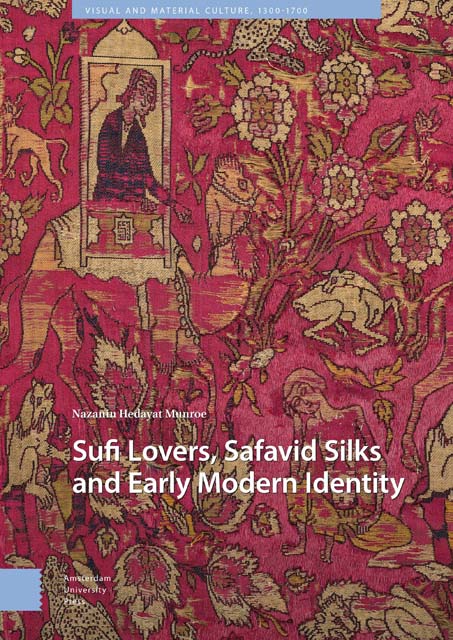Book contents
- Frontmatter
- Dedication
- Table of Contents
- Acknowledgments
- List of Illustrations
- Note on Transliteration
- Introduction: Material Culture and Mysticism in the Persianate World
- Part I
- Part II
- Conclusion
- Appendix A List of Khamsa Silks
- Appendix B Summary of ‘Shirin and Khusrau’ by Amir Khusrau Dihlavi
- Appendix C Summary of ‘Majnun and Layla’ by Amir Khusrau Dihlavi
- Glossary of Textile Terms
- Glossary of Persian and Arabic Terms
- List of Historic Figures
- Index
4 - The Divine Cloak of Majesty: Material Culture in Sufi Practice
Published online by Cambridge University Press: 19 April 2023
- Frontmatter
- Dedication
- Table of Contents
- Acknowledgments
- List of Illustrations
- Note on Transliteration
- Introduction: Material Culture and Mysticism in the Persianate World
- Part I
- Part II
- Conclusion
- Appendix A List of Khamsa Silks
- Appendix B Summary of ‘Shirin and Khusrau’ by Amir Khusrau Dihlavi
- Appendix C Summary of ‘Majnun and Layla’ by Amir Khusrau Dihlavi
- Glossary of Textile Terms
- Glossary of Persian and Arabic Terms
- List of Historic Figures
- Index
Summary
Abstract
Khamsa lovers are discussed as metaphors for the Sufi concept of earthly love as a mirror of divine love, bringing into question whether these silks would be worn by devout worshipers as a khirqa (‘Sufi cloak’). The relationship between material culture and spirituality is discussed in both mainstream Islam and Sufi mystic practice. Sufi etiquette books called futuwwat nama are discussed as the guidelines for garments, fibre types and patterns permissible for Sufi aspirants. In heterodox Islam the history of silk, gold and figural garments are studied through hadith (canonical saying about the Prophet’s life) and Qur’anic verse. Early modern kingship in Safavid Iran and Mughal India is introduced as extensions of Sufi practice and beliefs, expressed through symbolic dress and garments gifted as khil‘at (‘robes of honour’).
Keywords: Sufi robe, taj Safavi, Naqshbandi Sufi, Chishti Sufi, Safavi Order, Nizam al-Din Awliya
Considering that the Khamsa silks are imbued with characters celebrated in mystic poetry, it would follow that the wearers of these divinely inspired luxury garments would be practicing Sufis. However, a careful study of the relationship between mysticism and material culture indicates that this connection is hardly straightforward. While the iconography of Khamsa silks implies a strong correspondence with mystic belief, the donning of figural silk garments for men is a highly contested practice in traditional Islam, and in some cases within Sufi circles as well. From the latter half of the seventh century, sumptuary laws based on shari’a (‘Islamic canonical law’) were enforced to prohibit men from wearing silk and limit the depiction of human figures, whose function and context were continually debated by the ‘ulema (‘scholars of Islamic teaching’) throughout the centuries. From the medieval period, Sufi etiquette books were penned by spiritual leaders to define behaviour codes for followers of mystic belief, including chapters focused on permissible dress and materials.
Garments were also gifted as blessings and symbols of approval. In Sufi practice, the transfer of a sacred garment can indicate the conferral of spiritual authority, or a blessing for its recipient. In courtly culture, honorific robes were granted as a sign of approval and accepted as a form of allegiance.
- Type
- Chapter
- Information
- Sufi Lovers, Safavid Silks and Early Modern Identity , pp. 115 - 144Publisher: Amsterdam University PressPrint publication year: 2023



